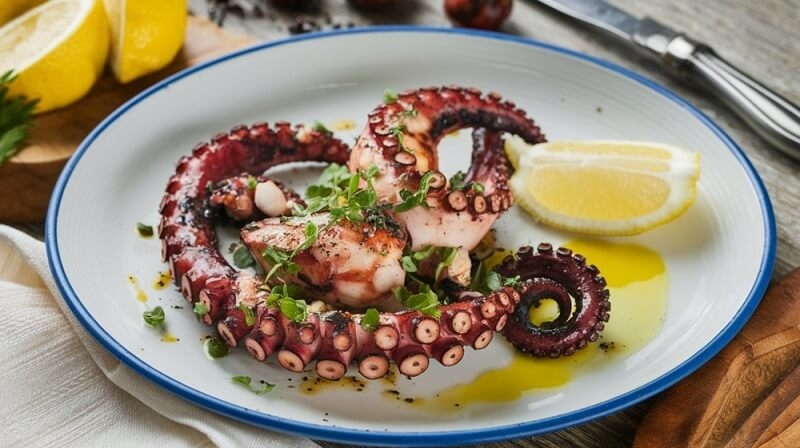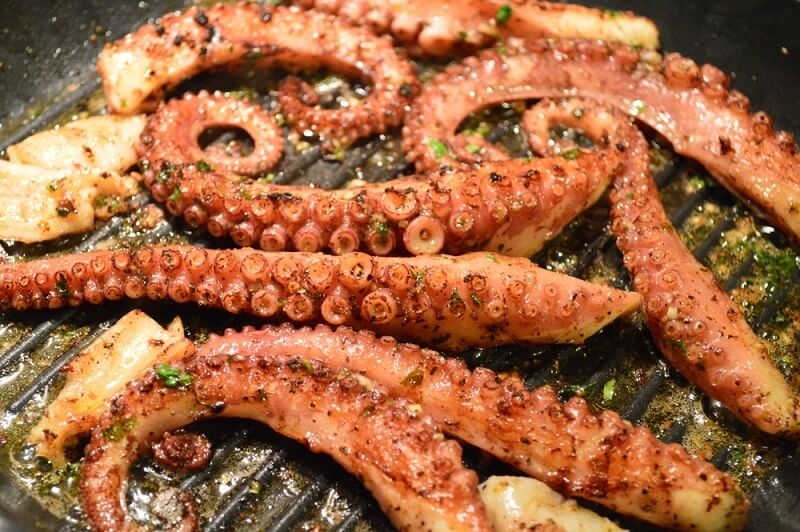
When preparing seafood, most home cooks wonder how to cook octopus tenderly. Getting that melt-in-your-mouth feel is not always a walk in the park. Still, restaurant-standard dishes can be prepared at home with boiling octopus tips, an understanding of a Spanish octopus recipe, and advice from a seafood cooking guide from Spain. Whether you're going to grill octopus Spanish style or just want to ensure that you are not making some common mistakes when cooking octopus, this guide will take you through each step.
Octopus must be cooked using timing, preparation, and technique. To learn to cook octopus tender, you must first understand that it will be tough unless you treat it appropriately. Its muscle fibers require slow cooking techniques or shock treatments to break down toughness. Spanish homes have been refining these techniques for centuries, so Spain is the world authority on cooking octopus.
By utilizing tried-and-true boiling octopus tips and fusing these with authentic grilling octopus Spanish customs, you'll have the fundamentals down and enjoy a flavorful trip with Mediterranean culinary roots.
Boiling octopus is one of the oldest and most reliable forms of cooking octopus. When done correctly, the boiling process helps release the collagen associated with the tentacles, leaving the flesh soft and pliable.
The Basic Steps to Boiling Octopus:
1. Cleaning the Octopus: Run cold water over the octopus and clean its beak and ink sac if needed.
2. The Classic Dip—Spanish chefs will dip the octopus in boiling water, usually three times, before submerging it. The three dips curdle the tentacles inwards and preserve flavour.
3. The slow cook - Cook on low for approx. 40 - 60 min depending on size. It is one of the most often-failing methods of cooking octopus to create a rubbery texture due to overcooking.
4. Flavouring infusion—For a light flavor infusion, you could put bay leaves, onions, garlic, or even wine in boiling water.
These boiling octopus tips are handy for anyone using a seafood cooking guide in Spain, where boiling tends to be the initial process before grilling or finalizing the recipe in olive oil.

There’s no better recipe to follow when making tender octopus than a Spanish one. Spain's northern region of Galicia is the world-renowned epicenter of Pulpo a la Gallega, a rustic but elegant dish.
Ingredients You’ll Need:
Method:
This Spanish octopus recipe reflects the rich seafood heritage of the country, and it is a standout in any seafood cooking book from Spain.
Many chefs grill octopus Spanish style, using boiling as a pre-cooking method before grilling, which adds a smoky, charred flavor to the octopus's natural sweetness and depth to the already tender flesh.
Steps for Grilling
Grilling octopus Spanish style is the favorite of food enthusiasts who desire a smoky finish without loss of tenderness.
Despite the best intentions, most cooks make mistakes that destroy texture and taste. To master cooking octopus tenderly, avoid the following pitfalls:
By avoiding these octopus cooking errors, you can adhere to the tenets of the original seafood cooking guide in Spain.
Spanish seafood tradition has always focused on freshness, simplicity, and respect for ingredients. The octopus dishes reinforce these truths splendidly. A seafood cooking guide in Spain traditionally focuses on three pillars:
By using this seafood cooking guide for Spain, home cooks build the confidence to try new things without losing the authenticity.
Learning to cook octopus tender is just half the process. Presentation and pairing take the dish from plain seafood to a memorable meal.
From cooking octopus tips to boiling, down to mastering a Spanish recipe for octopus, each of the techniques in this guide to seafood cooking in Spain looks back to one destination: tenderness. Grilling octopus Spain style infuses smoky richness, and steering clear of mistakes in cooking octopus helps you reap the full reward of your labor.
Learning to cook octopus tender is a science and an art, but with time, dedication, and real technique, you can serve this delicacy like a Spanish chef.
Q1. How long should I boil octopus to make it tender?
Most octopuses, depending on their size, take 40–60 minutes to become tender. Smaller ones may be done in 30 minutes, while larger ones will need more simmering time. Always check with a fork—if it penetrates easily, the octopus is done.
Q2. Can I grill octopus without boiling it first?
This is discouraged. One of the most common octopus cooking mistakes is skipping the pre-boil. By skipping the boil, the flesh becomes rubbery and almost unattainable to chew. Always use boiling octopus tips before grilling octopus in Spain style.
Q3. What flavors pair well with octopus?
Classic Spanish octopus recipe pairings are olive oil, sea salt, and smoked paprika. To add freshness, use lemon juice, parsley, and or garlic. These simple flavors enhance and do not cloak the delicate seafood flavor.
Q4. Is frozen octopus a good option for cooking?
Yes, and many chefs will tell you to buy frozen products because freezing helps break down muscle fibers, allowing you to achieve a tender product. Just thaw it slowly before cooking.
Q5. What is the biggest secret to learning how to cook octopus tenderly?
Patience. Boiling low and slow, seasoning it properly, and allowing it to rest in its cooking liquid are just a few of the keys to tenderness. Use the combination of those steps, and you will achieve the authentic recipe in a seafood cooking guide in Spain.
This content was created by AI